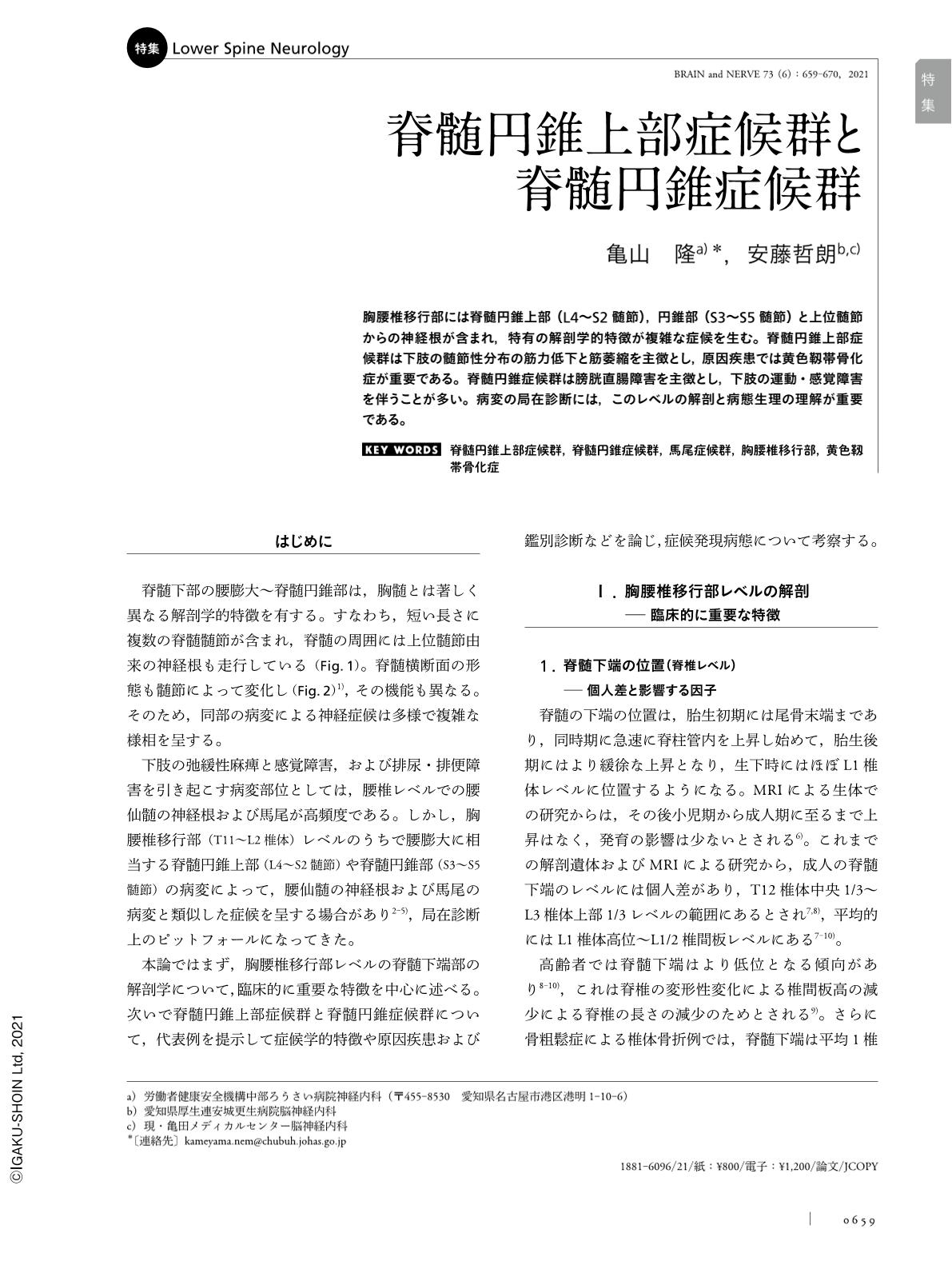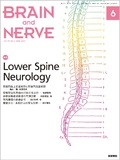Japanese
English
- 有料閲覧
- Abstract 文献概要
- 1ページ目 Look Inside
- 参考文献 Reference
胸腰椎移行部には脊髄円錐上部(L4〜S2髄節),円錐部(S3〜S5髄節)と上位髄節からの神経根が含まれ,特有の解剖学的特徴が複雑な症候を生む。脊髄円錐上部症候群は下肢の髄節性分布の筋力低下と筋萎縮を主徴とし,原因疾患では黄色靱帯骨化症が重要である。脊髄円錐症候群は膀胱直腸障害を主徴とし,下肢の運動・感覚障害を伴うことが多い。病変の局在診断には,このレベルの解剖と病態生理の理解が重要である。
Abstract
The most caudal part of the spinal cord shows special anatomical characteristics and it contains epiconus (L4-S2 segments), the conus medullaris (S3-S5 segments), and surrounding nerve roots. Lesions of the thoracolumbar junction cause epiconus or conus syndrome. Epiconus syndrome is characterized by segmental muscular weakness and atrophy of one or both lower extremities, often accompanied by foot drop. It may manifest as motor neuron disease in the absence of sensory loss. Ossification of the ligamentum flavum is an important cause of epiconus syndrome. Conus syndrome is characterized by urinary and rectal disturbances, usually accompanied by some motor and sensory symptoms involving the lower extremities. Both syndromes are often misdiagnosed as lumbar radiculopathy or cauda equina lesions. A thorough understanding of the anatomical features and pathophysiology is important for early and accurate diagnosis of epiconus or conus syndrome.

Copyright © 2021, Igaku-Shoin Ltd. All rights reserved.


